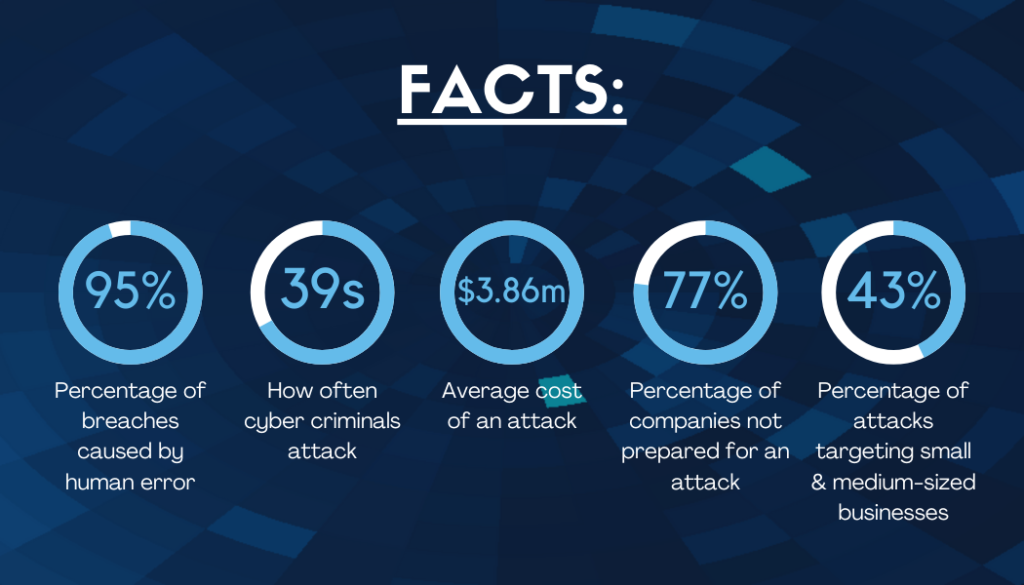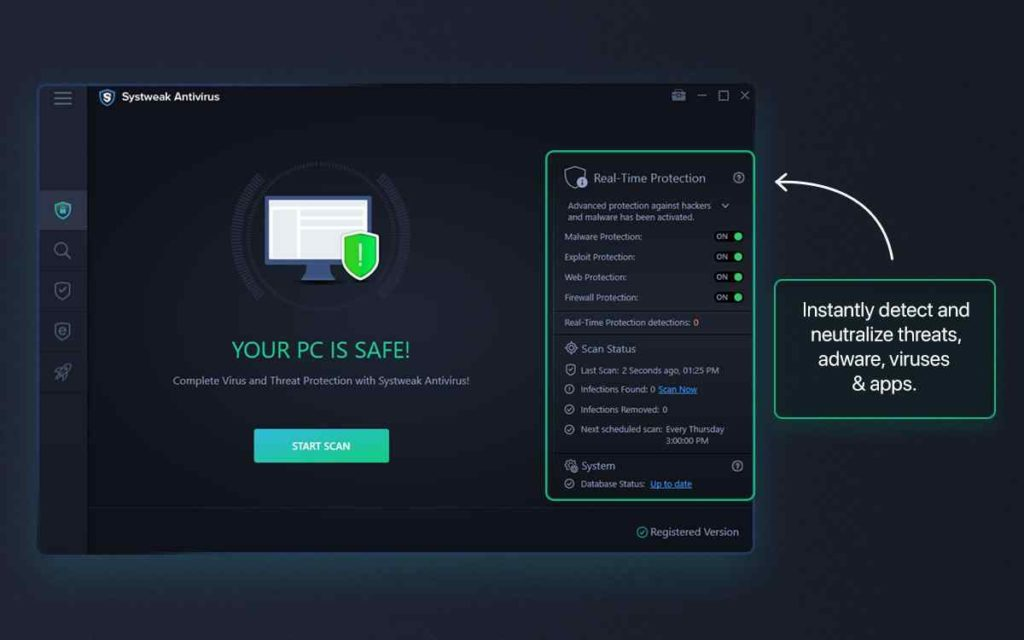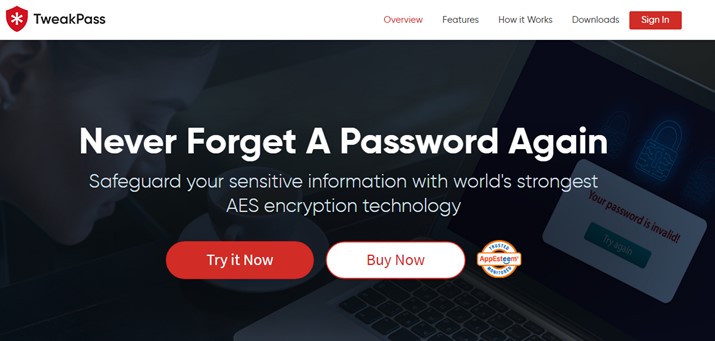In the evolving cyber threat landscape where data breaches and cyberattacks are increasing, there is no room for cybersecurity myths and misconceptions that weaken security. Therefore, in this post, we will make you aware of the common security myths that need to be debunked for adequate cybersecurity.
In the modern digital world, cybersecurity has become imperative, and irrespective of the business size and industry, organizations have started to invest in cyber defense and training. However, all these efforts go in vain when myths take over reality. So, without any further delay, let us know about the common cybersecurity reality and myths.
“Cybersecurity misconceptions can be a barrier to effective security.”
Top Cybersecurity Myths and Misconceptions (2023)
The first step to ensuring safety is to separate the false information, and rumors from the truth.
Here are the common cybersecurity myths.
Myth #1 — Strong security measures decrease productivity
This is a common misunderstanding that increased security not only makes it difficult for hackers to access anything, but even the employees can’t access what they need. In short, it is believed that stringent security policies – monitoring and access control hamper work productivity. However, this is not the case because reducing security means your business can be compromised and is at risk. Also, a ransomware attack can bring the business to a standstill and kick out employees from their system thereby preventing them from accessing files, networks, and other important information.
Fact: Strong cybersecurity might not let you access some sites, but it surely boosts productivity.
With the modern cybersecurity approach in place, employees can focus on work. Also, they don’t have to worry about malware or virus attacks as the built-in security feature, real-time protection will easily detect and mitigate the threats.
Myth #2 — Cyberattacks are a result of external factors or threat actors
Sadly, human error is the biggest reason for being a victim of cyberattacks and data breaches. Insider threats – vendors, employees, business partners, or bad guys impersonating employees are becoming rampant and are a cause of concern for businesses. A recent survey showed insider threats are behind 60% of data breaches.

Fact: Someone from your organization or you can be the initiator of cyberattacks. Therefore, using a combination of different cybersecurity practices like behavioral analytics, privilege, and access management should be implemented. Also, from time to time, employees should be educated and security awareness training sessions should be conducted. This will help lessen the danger of insider threats.
Myth #3 — SMBs are not the target of cyberattackers
Another biggest misconception small and medium-sized businesses have is that their data isn’t valuable to hackers. It is only the big business houses that attackers target. But the fact is that SMBs are no longer flying under the radar; they are among the top targets for hackers.

According to the Sectigo State of Website and Threat Report, the aforementioned graph shows the list of cyberattacks that have happened in the past year, resulting in more than a third of incurred lost revenues and customers.
Fact: The size of a business does not make it immune to hacking attempts and malware attacks.
For hackers when it comes to stealing data don’t discriminate. So, don’t make the size of your business a determinant of judging whether you will be attacked or not.
Myth #4 — Free Anti-Virus Software is enough to secure the system
The anti-virus software is essential for data and system security. However, if you think a Free security tool will offer all the advanced level security shields and they are enough you are wrong. A free tool can only secure a handful of entry points. Hackers have their ways to bypass the anti-virus and infiltrate your system. So, instead of using free antivirus, you should go with a paid security tool that comes with real-time protection, malware protection, web protection, firewall, scans startup items, and more. Our recommendation is to try Systweak Antivirus. To learn more about the tool, check the review of Systweak Antivirus.

Fact: Free antivirus can only protect you from a limited number of threats. To stay protected against the latest and emerging cyber threats, an advanced and robust antivirus is required.
Myth #5 — Cybersecurity makes a hole in the pocket
Each passing day cyberattacks are making headlines and costing businesses millions, yet companies think whether investing in cybersecurity is a good idea or not. Often overlooked data security is an afterthought for most companies. Only after being a victim of a cyberattack, they understand the importance of security measures.

Fact: Compared to the cost a company has to pay when the servers and network is compromised is far more than the cost of a good cybersecurity solution. Modern-day security solutions are designed to protect you from the latest threats. In addition to this, companies can take other precautionary measures like using a password manager like TweakPass to generate strong passwords, secure data in an encrypted vault, use identity protector tools like Advanced Identity Protector, and more.
Myth #6 — You don’t need cybersecurity in place as you’ve never been attacked
If you’ve never been a victim of a cyberattack or data breach, it doesn’t mean you are immune or will never be targeted. Also, it doesn’t mean your security practices are strong enough to keep hackers at bay. It can simply mean you are lucky but you never know when the luck wears off. As cyber threats and hacking tools are evolving & getting sophisticated you never know when you can be the target or you can be the next.
Fact: You can be on their list or the next target. Therefore, keep a check on your security practices and create a strong security strategy that helps identify existing weaknesses and mitigate attack attempts before they can cause any harm.
Myth #7: Passwords you use are strong and secure
No passwords are strong enough to break. Unless they are randomly generated, are a combination of special characters, capital letters, alphanumeric, and are regularly updated they aren’t secure.
Fact: Alongside creating strong passwords, you need two-factor authentication and data monitoring
Myth #8: Cybersecurity is the responsibility of the IT department
You cannot ask one department to take care of the security of the complete organization. The IT department is responsible for putting security measures in place but it doesn’t mean they are the only ones responsible.
Fact: Keeping an organization safe from being a victim of a cyberattack is the responsibility of every team member.
Myth # 9: Password-protected Wi-Fi networks are secure
No password offers 100% protection or guarantee of being secure.
Fact: A public Wi-Fi network even with a password can be compromised.
Myth # 10: When your system is compromised you immediately know
If you think this way, then sadly you are wrong. Knowing your system is being compromised or the data is being stolen is not easy. Not even the big security companies know about it that easily.
Fact: Sometimes it takes months even years to know and realize the system has been compromised and data has been stolen in the background.
Myth #11: BYOD is secure and safe
To an extent, you might be right if you are using them personally, not for accessing servers or business data.

Fact: Personal devices, whether laptops, smartphones, or wearables any of these devices can put your company’s network at risk
Myth #12: Penetration tests are enough to stay secure
Fact: Penetration tests are only helpful in the case when the vulnerabilities are identified and you are rectifying them.
Are cybersecurity myths putting your business at risk? It’s time to know the facts about cybersecurity!
In the present day, a digital world where cyberattacks are evolving and getting sophisticated, differentiating between myths and facts is important. Once we know what the reality is only then we can deal with the false beliefs. We hope you find the information shared in the post helpful and will keep these points in mind so that the myths and facts don’t collide. Do share your thoughts in the comments below.
Cybersecurity Reality in Numbers
- 58% of cyberattacks target small businesses
- 84% of cyberattacks are due to human error
- 60% of data breaches involve insiders
- 51% of companies were a victim of cyber attacks due to BYOD
Stay informed and secure. Misinformation can cause you a lot!
If you have any queries or suggestions to share, feel free to drop them in the comments section below. You can also drop a line on our Facebook handle!



 Subscribe Now & Never Miss The Latest Tech Updates!
Subscribe Now & Never Miss The Latest Tech Updates!